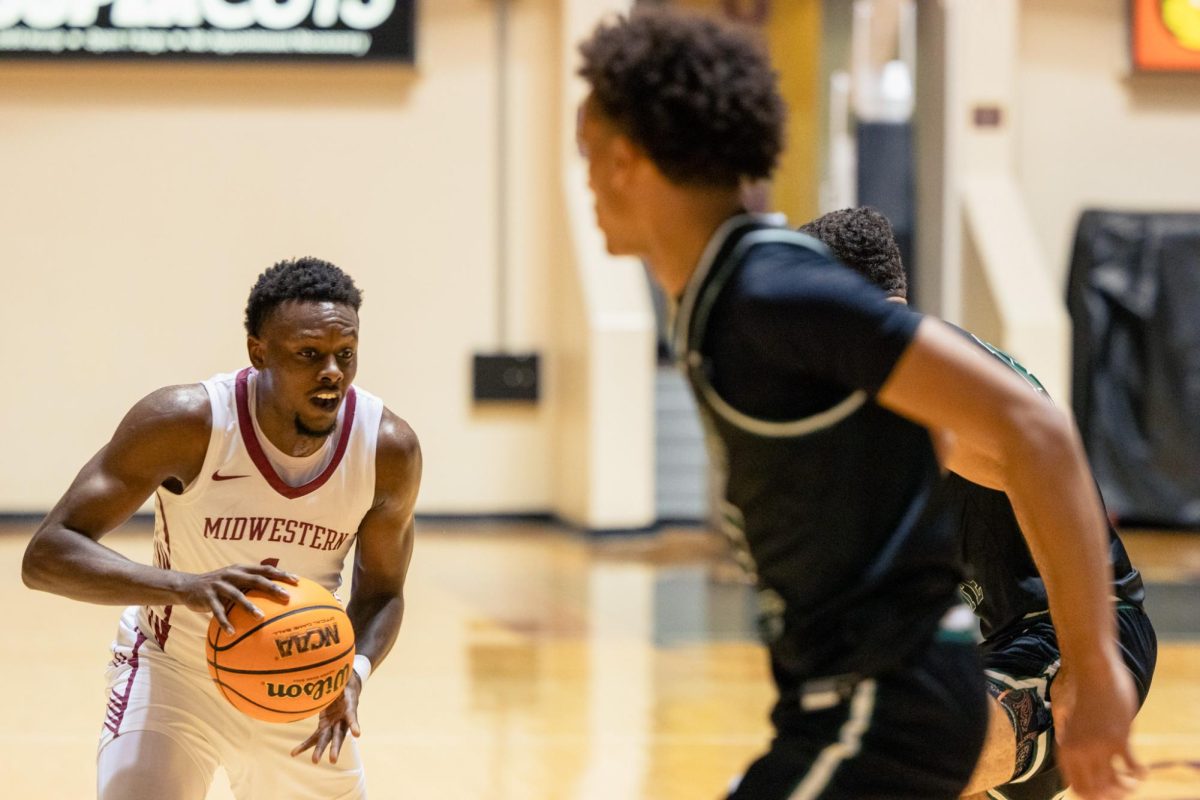Attendance drops 4.78 percent; university to focus more on recruitment
Student attendance dipped 4.78 percent this spring, making the lowest enrollment since at least fall of 2004.

Photo by Shelby Davis.
“The big picture is that our graduating classes the last two years have been larger than our freshman class,” said Keith Lamb, vice president of student affairs and enrollment management.
Enrollment is down 479 students since fall 2012.
Partially, Lamb said, because more students have been graduating than have been enrolling.
“Midwestern’s enrollment decreased by 510 students from the fall 2010 semester to the fall 2012 semester,” Lamb said.
“The drop is a combination of several items: geography, due to the population in this region of Texas declining; increased admission standards; available resources for identifying and communication with prospective students and increased completion and graduation rates at MSU,” Lamb said noting that enrollment dropped 510 students from the fall of 2010 to the fall of 2012.
The declining population in North Texas is also a factor in Midwestern’s enrollment woes, Lamb said.
With 5,437 students, President Jesse Rogers said enrollment is almost exactly the number that administrators anticipated since the spring enrollment is based upon the fall enrollment.
“[Fall enrollment] too was down about 4.5 percent,” Rogers said. “Additionally the December graduating class was very large. We are taking so many measures that I would not begin to delineate each them.”
Last fall, a drop in enrollment resulted in a $1 million shortfall.
At a Student Government Association meeting last week, Rogers notified students of a possible raise in tuition if state funding is cut, but said a decline in enrollment would not result in a tuition increase.
“We are taking other steps to streamline and reduce our operating budget in order to keep tuition and fees as low as possible,” he said.
Lamb said when the fall enrollment numbers were finalized, the university adjusted its estimate for the spring and was within 13 of that adjusted estimate.
The senior class, with 1,902, is the largest class.
However, Rogers said the number of freshmen applicants has increased as a result of more promotion and contracts.
“Our numbers of beginning freshmen for fall 2013 is up considerably. All universities are recruiting more aggressively than ever,” Rogers said.
Lamb said while Midwestern will have a larger freshman class and more transfer students in the fall 2013, overall enrollment should be relatively flat.
“MSU currently has relatively small sophomore and junior class, with a large expected graduating class this spring,” Lamb said. “As such, the increase of freshman and transfer students will help stabilize.”
Based on the amount of recruiting for incoming freshman classes, enrollment will being to grow, Lamb said.
According to Lamb, the success of Saturday’s Mustang Rally was a good indicator for future attendance.
“There were 391 students in attendance, a 78 percent increase over last spring, and a 468 parents in attendance, a 69 percent increase over last spring,” Lamb said.
In addition to making budget cuts, getting more students to look at Midwestern is one of Lamb’s key goals. An aggressive marketing campaign to 50,000 high school seniors with letters and emails became a driving force for recruitment last fall.
The university has also begun a series of 10, topic-specific postcards being mailed to 50,000 prospects and those who have applied.
“We will mail information to 40,000 juniors later this spring, a series of three mailing from mid-spring to mid-summer, which beings our efforts on the fall 2014 incoming class,” Lamb said. “Given the sheer volume of applications, campus tours, Mustang Rally numbers, and other measures, we are getting more looks.”
Also, the experience prospective students have when visiting campus needs to be second to none and Lamb admits the university is working to improve.
“There will be more opportunities for students to visit campus, more to do while visiting campus, and we will generally have a more robust visit experience,” Lamb said. “As we evaluate these programs and determine effectiveness, we will refine and improve our practice. I feel very good about the enrollment future of MSU.”
With a new online interface, Lamb said he is working to improve the university’s online presence.
“We are looking at things such as ease of access, website presentation, social media usage and automatic merit scholarships awards,” Lamb said. “The goal is to make application and admission to MSU as easy as possible for prospective students.”
Lamb also credits the importance of not hurting incoming student’s bank accounts.
“The way we leverage financial aid and scholarships is changing with this incoming class,” he said. “The importance of financial aid and the availability of scholarships cannot be overstated.”
The addition of new programs will also improve the number of students enrolling.














